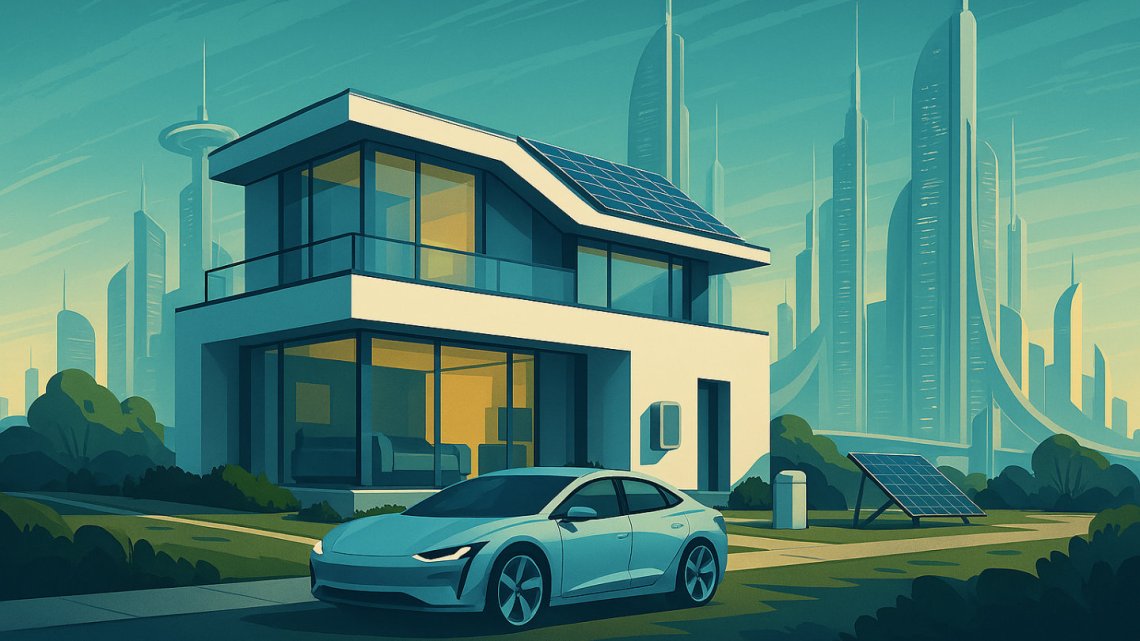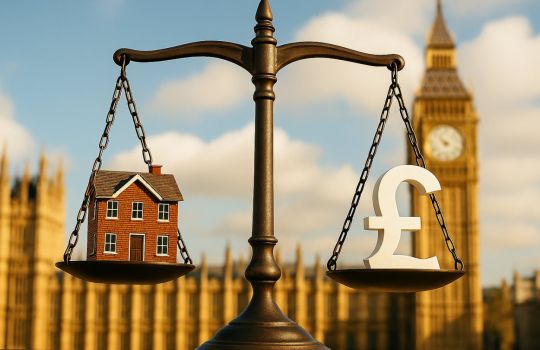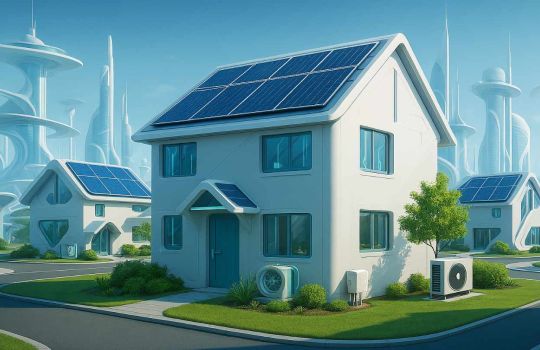The Future Homes Standard

As the UK edges closer to its net-zero ambitions, the Future Homes Standard (FHS) is poised to become a transformative force in housing. With consultations closed over a year ago and final legislation expected this autumn, the countdown to implementation has begun. While the full regulatory framework is still in development, the direction is clear: new homes will soon be built to radically higher environmental standards - and the property market is already responding.
What Is the Future Homes Standard?
The Future Homes Standard is a new set of building regulations for England, designed to ensure that all new homes are “zero-carbon ready”. This means:
- 75–80% fewer carbon emissions compared to homes built to 2013 standards.
- No fossil fuel heating systems - gas and oil boilers will be banned in favour of low-carbon alternatives like heat pumps and district heating.
- Enhanced energy efficiency, airtightness, and insulation to reduce heat loss.
- Future-proofing - homes must be built to avoid the need for retrofits as the UK decarbonises its energy grid.
The FHS will be delivered through updates to Parts L (energy efficiency), F (ventilation), and O (overheating mitigation) of the Building Regulations. A parallel Future Buildings Standard will apply to non-domestic properties.
2025 Update: Where Things Stand
The Department for Energy Security and Net Zero has confirmed that the final Future Homes Standard will be published in autumn 2025, with legislation expected to be laid before Parliament by December. A 12-month transitional period will follow, meaning full compliance will be mandatory for all new homes from December 2027.
Key developments include:
- The Home Energy Model (HEM) will replace the Standard Assessment Procedure (SAP) methodology for energy assessments.
- The Energy Calculation as a Service (ECaaS) platform will become the official tool for compliance with Part L.
- Solar PV will be a “Functional Requirement” for most new homes, subject to practical constraints.
What It Means for Buyers and Homeowners
For buyers of new-build homes, the FHS promises:
- Lower energy bills, thanks to better insulation and efficient heating.
- Reduced maintenance costs, with no need for retrofitting.
- Future-proofed properties, aligned with climate targets and upcoming regulations.
However, concerns remain:
- Overheating risks in airtight homes without adequate ventilation.
- Higher upfront costs for developers, which may be passed on to buyers.
- Wood-burning stoves, while permitted as secondary heating sources, have sparked debate due to air quality concerns.
| Feature - scroll to continue with content... |
| continue reading article... |
The Property Market: Winners, Losers & Emerging Trends
FHS-compliant homes are expected to command a premium:
- Buyers are increasingly prioritising EPC ratings, solar integration, and heat pump systems.
- Green mortgages and financial incentives may favour energy-efficient properties.
- Developers are already marketing homes with “zero-carbon ready” credentials.
Older Homes: A Growing Divide
The gap between new and existing stock is widening:
- Homes with poor energy performance may become less desirable.
- Landlords face pressure to upgrade properties to EPC C or better by 2030.
- Valuers may factor retrofit costs into pricing, affecting market dynamics.
There’s also growing momentum for embodied carbon assessments to be included in valuations - a move that could redefine how “green value” is measured.
Retrofit Demand on the Rise
As new builds set the standard, retrofit activity is accelerating:
- Homeowners are investing in insulation, solar panels, and heat pump systems.
- Government schemes like the Boiler Upgrade Scheme offer support.
Short-Term Disruption Ahead?
The road to implementation may be bumpy:
- Planning applications may surge in late 2025 as developers seek to build under current rules.
- Supply chain pressures - especially for heat pump engineers - could drive up costs.
- Smaller developers may struggle to adapt without targeted support.
Looking Ahead: Key Milestones
| Aspect | Expected Outcome |
| Legislation Release | Autumn 2025 |
| Implementation Date | December 2026 |
| Transitional Period Ends | December 2027 |
| Fossil Fuel Heating Ban | Yes, for new builds only |
| Compliance Tools | HEM and ECaaS |
| Retrofit Regulation | Likely for rental & older homes |
| Property Value Impact | Higher energy-efficient homes |
Final Thoughts
The Future Homes Standard marks a pivotal shift in how we build and value homes in the UK. It’s not just about compliance - it’s about redefining quality, sustainability, and long-term value in housing.
Whether you're a buyer, landlord, or investor, one message is clear: energy efficiency is no longer optional - it's the new standard.
This article is for informational purposes. Always seek professional advice before making any property decisions.










